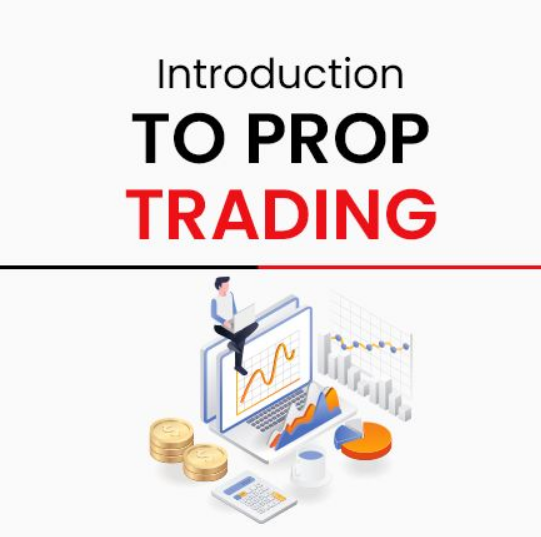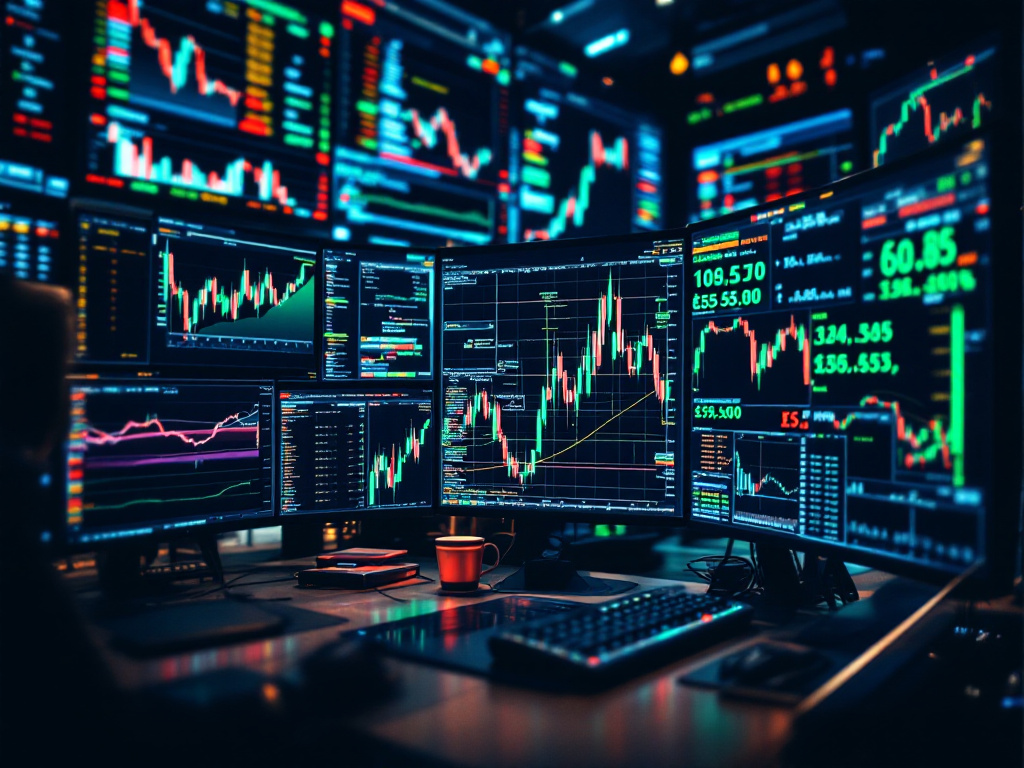Maximizing Prop Trading with Automated Backtesting Tools
In the high-stakes world of prop trading, the margins between success and failure can be razor thin. As traders look for every possible edge, automated backtesting tools have emerged as essential instruments that help reduce risk and improve strategy performance. By leveraging these tools, prop traders can simulate real market conditions and optimize their trading systems with confidence.
Introduction to Prop Trading and Automated Backtesting
Proprietary trading, or prop trading, involves firms using their own capital to invest in financial markets. This approach requires a deep understanding of market mechanics, disciplined strategy execution, and rigorous risk management. Automated backtesting tools enable traders to test their strategies against historical data to understand potential pitfalls and refine their approaches. This is particularly critical for those looking to scale their operations without exposing themselves to excessive risk.
Automated backtesting tools have become indispensable for traders, allowing them to simulate scenarios using historical data, thereby validating their trading hypotheses before committing real capital. Such tools ensure that the trading edge a prop shop claims is backed by rigorous analysis and statistical evidence.
![]()
Understanding Prop Trading Strategies
Prop trading strategies vary incredibly, from high-frequency trading (HFT) to longer-term trend-based approaches. Regardless of the style, the common objective is to identify a sustainable market edge. Automated backtesting tools help in:
- Validating trading hypotheses with historical data
- Identifying statistical weaknesses in strategies
- Streamlining the overall development cycle of trading systems
The Importance of Data Quality
One key aspect of effective backtesting is the quality of historical market data. The more granular and accurate the data, the better the simulation. In prop trading, making decisions based on subpar data can sieve out even a well-designed strategy. Hence, ensuring that the automated backtesting tools have access to comprehensive data feeds is crucial.
Integrating Backtesting with Real-Time Analysis
Forward testing or paper trading accompanies backtesting, providing an additional safety net before deploying strategies live. Combining both helps prop trading firms mitigate risks and anticipate market volatility more accurately. A harmonious integration of these stages results in well-rounded trading strategies that are both robust and adaptive.
The Role of Automated Backtesting Tools in Prop Trading
With the rise of advanced technology, the financial markets have seen a surge in sophisticated algorithmic trading systems. Automated backtesting tools are at the heart of this transformation and offer the following benefits:
- Efficiency: They significantly speed up testing cycles by automating repetitive tasks.
- Accuracy: These tools calculate key performance metrics with precision, reducing human error in evaluations.
- Scalability: Prop firms can test multiple strategies simultaneously and fine-tune them quickly to seize market opportunities.
- Cost-Effectiveness: Utilizing automated backtesting tools minimizes the need for labor-intensive manual testing and analysis.
Traders deploying these tools tend to have a more analytical approach, turning raw data into actionable intelligence that directly informs their trading decisions.
Choosing the Best Tools for Your Needs
When it comes to selecting an automated backtesting tool, prop traders should keep in mind:
- Functionality: Look for systems that support your preferred trading models and strategies.
- Affordability: Consider cost-effective solutions without compromising on key features—this includes affordable backtesting software for traders who are budget conscious.
- Advanced Features: Some platforms offer additional modules like risk assessment and automated trade execution, ensuring a comprehensive testing environment.
Implementing Automated Backtesting in Your Prop Trading Setup
Transitioning to an automated backtesting system requires careful planning and setup. Below are some step-by-step recommendations tailored for prop trading:
Step 1: Define Your Trading Strategy
Before you can backtest effectively, clearly outline your trading strategy. This includes your entry and exit criteria, risk management rules, and any underlying market assumptions. A well-defined strategy becomes the blueprint for how the backtesting tool will evaluate historical data.
Step 2: Gather High-Quality Data
Data is the backbone of any backtesting process. Ensure that your data feed is both complete and reliable. Many advanced trading platforms offer comprehensive backtesting tools for financial markets that come integrated with reliable data sources.
Step 3: Configure and Run Your Backtest
Utilize your chosen automated backtesting tool to run simulations on historical data. Pay close attention to key performance indicators, such as drawdown, profit factor, and win rate. Use these metrics to diagnose strategy performance and discover areas for improvement.
Step 4: Analyze Results and Optimize
After running backtests, analyze the results to pinpoint strengths and weaknesses in your strategy. Revisit your initial assumptions if necessary and refine your trade criteria. The iterative process is crucial for evolving your prop trading strategy to stay competitive in dynamic market conditions.
Having a disciplined approach towards backtesting not only validates your ideas but also builds confidence in your trading decisions.
![]()
Practical Tips and Step-by-Step Guidance
To make the most of automated backtesting tools within prop trading, here are some actionable tips that can guide you through the process:
Start Small, Scale Gradually
It is advisable to begin with a single strategy if you are new to automated backtesting. Focus on one trading idea, test it thoroughly, and only scale once you have consistent performance metrics. An incremental approach minimizes risk while allowing you to learn and adapt over time.
Diversify Your Strategies
Relying on a single strategy can expose you to market fluctuations. As your confidence grows, diversify your approach by testing multiple models. This can help in cushioning the impact of adverse market conditions and boost overall profitability.
Keep a Trading Journal
Alongside automated backtesting, maintain a detailed trading journal. Document every hypothesis, test result, and adjustment made. This record will provide valuable insights over time and assist in replicating successful strategies across different market cycles.
Regularly Update Your Data Sets
Market dynamics change continuously. Periodic updates to your historical data sets ensure that your backtests reflect the most current market conditions. Staying updated will enable your trading system to anticipate new trends and adjust strategies dynamically.
Real-World Examples and Case Studies in Prop Trading
Let’s explore some real-world examples of how automated backtesting tools have been harnessed for prop trading success:
Case Study: High-Frequency Trading Firm
A leading HFT firm integrated automated backtesting tools to refine their algorithmic models. By rigorously testing different market scenarios, the firm was able to significantly reduce drawdown and increase its win rate. The tools helped identify moments where the algorithms could underperform, prompting the team to reconfigure parameters and optimize latency.
Case Study: Multi-Strategy Prop Shop
An established prop shop deployed several backtesting platforms to validate multiple strategies concurrently. This allowed the firm to diversify risk effectively while ensuring each model met strict performance criteria before live deployment. The outcome was a balanced trading portfolio that leveraged both short-term and long-term opportunities.
Conclusion: Elevate Your Prop Trading Game
Automated backtesting tools represent a paradigm shift in how prop traders approach strategy development and risk management. By meticulously simulating market conditions and refining trading systems, prop traders can achieve greater accuracy, improved efficiency, and sustainable profitability.
The journey of mastering these tools is continuous and iterative. Whether you are a beginner or an experienced trader, embracing automated backtesting is crucial for evolving your trading edge. Start by integrating these tools into your trading workflow, and watch as your prop trading strategies become more refined and actionable.
If you’re ready to take your prop trading to the next level, explore advanced backtesting software, experiment with various strategies, and commit to continual learning and adaptation. The role of technology in trading is only set to grow, and staying ahead means leveraging every tool at your disposal.
Call to Action: Join our community of prop traders who are harnessing the power of automated backtesting tools. Sign up for our newsletter for more insights, guides, and industry trends that will help you maximize your prop trading success!







